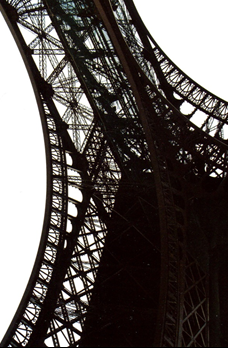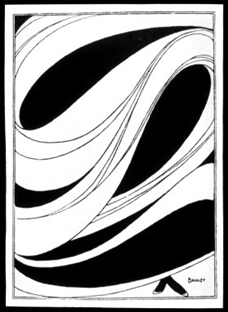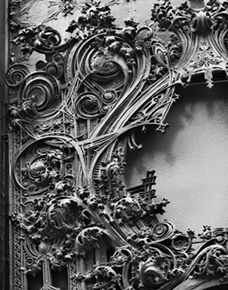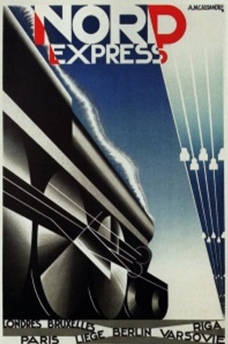Historical
19th CENTURY
 Edward William Godwin, one of the originators of the Aesthetic movement in England designed innovative furniture in a spare and refined way without excess carving. Godwin’s own aesthetic sensibilities were heavily influenced by the arts of Japan. The proponents of the movement found beauty in the contrast of the mundane and the simple with the exotic and highly decorative. Borrowing from Western and non-Western sources, as well as from contemporary designers such as William Morris and Dr. Christopher Dresser, the avant-garde Aesthetes sought to create a sophisticated style. In America Herter Brothers and the Associated Artist were commissioned by wealthy American financiers and industrialists, who were eager to redefine a luxurious standard of living. In this “Gilded Age” era, Tiffany & Co., Gorham and Whiting also created some of the most extraordinary silver objects ever made. Many of the revivalist styles including Renaissance, Egyptian, Persian, Chinese, Japanese among others were explored and featured in a wide variety of decorative arts and furniture.
Edward William Godwin, one of the originators of the Aesthetic movement in England designed innovative furniture in a spare and refined way without excess carving. Godwin’s own aesthetic sensibilities were heavily influenced by the arts of Japan. The proponents of the movement found beauty in the contrast of the mundane and the simple with the exotic and highly decorative. Borrowing from Western and non-Western sources, as well as from contemporary designers such as William Morris and Dr. Christopher Dresser, the avant-garde Aesthetes sought to create a sophisticated style. In America Herter Brothers and the Associated Artist were commissioned by wealthy American financiers and industrialists, who were eager to redefine a luxurious standard of living. In this “Gilded Age” era, Tiffany & Co., Gorham and Whiting also created some of the most extraordinary silver objects ever made. Many of the revivalist styles including Renaissance, Egyptian, Persian, Chinese, Japanese among others were explored and featured in a wide variety of decorative arts and furniture.
ART NOUVEAU
 The Art Nouveau movement was an ornamental style of art that flourished between about 1890 and 1910 throughout Europe and the United States. Art Nouveau is characterized by its use of a long, sinuous, organic line and was employed most often in architecture, interior design, jewelry and glass design, posters and illustration. Some of the more prominent artists within the Art Nouveau style were the Scottish architect and designer Charles Rennie Mackintosh, who specialized in a predominantly geometric line and particularly influenced the Austrian Secession style; the Belgian architects Henry van de Velde and Victor Horta, whose extremely sinuous and delicate structures influenced the French architect Hector Guimard, another important figure; the American glassmaker Louis Comfort Tiffany; the French furniture and ironwork designer Louis Majorelle; the Czechoslovakian graphic designer-artist Alphonse Mucha; the French glass and jewelry designer Rene Lalique; the American architect Louis Henry Sullivan, who used plantlike Art Nouveau ironwork to decorate his traditionally structured Arts & Crafts buildings; and the Spanish architect and sculptor Antonio Gaudi, perhaps the most eccentric artist of the movement, who transformed buildings into curving, bulbous, brightly colored, organic constructions.
The Art Nouveau movement was an ornamental style of art that flourished between about 1890 and 1910 throughout Europe and the United States. Art Nouveau is characterized by its use of a long, sinuous, organic line and was employed most often in architecture, interior design, jewelry and glass design, posters and illustration. Some of the more prominent artists within the Art Nouveau style were the Scottish architect and designer Charles Rennie Mackintosh, who specialized in a predominantly geometric line and particularly influenced the Austrian Secession style; the Belgian architects Henry van de Velde and Victor Horta, whose extremely sinuous and delicate structures influenced the French architect Hector Guimard, another important figure; the American glassmaker Louis Comfort Tiffany; the French furniture and ironwork designer Louis Majorelle; the Czechoslovakian graphic designer-artist Alphonse Mucha; the French glass and jewelry designer Rene Lalique; the American architect Louis Henry Sullivan, who used plantlike Art Nouveau ironwork to decorate his traditionally structured Arts & Crafts buildings; and the Spanish architect and sculptor Antonio Gaudi, perhaps the most eccentric artist of the movement, who transformed buildings into curving, bulbous, brightly colored, organic constructions.
ARTS & CRAFTS
 The Arts and Crafts movement was one of the most influential, profound and far-reaching design movements of modern times. It began in Great Britain around 1880 and quickly spread across America and Europe. It took its name from the Arts and Crafts Exhibition Society, which was founded in London in 1887. It was inspired by the writings of the architect Augustus Pugin, the writer John Ruskin and the artist William Morris and it encompassed a very wide range of like-minded societies, workshops and manufacturers including Charles Rennie Mackintosh and C.R. Ashbee. Other countries adapted Arts and Crafts philosophies according to their own needs and while the work may be visually very different, it is united by essentially the same ideals that lie behind it. Arts and Crafts stood for traditional craftsmanship using simple forms and often applied medieval, romantic or folk styles of decoration. It advocated economic and social reform, and has been said to be essentially anti-industrial. It was a movement born of ideals. It grew out of a concern for the effects of industrialization: on design, on traditional skills and on the lives of ordinary people. In response, it established a new set of principles for living and working. Major Arts and Crafts figures in the United States include Louis Sullivan, Frank Lloyd Wright, George Washington Maher, the Kalo Shop and many others.
The Arts and Crafts movement was one of the most influential, profound and far-reaching design movements of modern times. It began in Great Britain around 1880 and quickly spread across America and Europe. It took its name from the Arts and Crafts Exhibition Society, which was founded in London in 1887. It was inspired by the writings of the architect Augustus Pugin, the writer John Ruskin and the artist William Morris and it encompassed a very wide range of like-minded societies, workshops and manufacturers including Charles Rennie Mackintosh and C.R. Ashbee. Other countries adapted Arts and Crafts philosophies according to their own needs and while the work may be visually very different, it is united by essentially the same ideals that lie behind it. Arts and Crafts stood for traditional craftsmanship using simple forms and often applied medieval, romantic or folk styles of decoration. It advocated economic and social reform, and has been said to be essentially anti-industrial. It was a movement born of ideals. It grew out of a concern for the effects of industrialization: on design, on traditional skills and on the lives of ordinary people. In response, it established a new set of principles for living and working. Major Arts and Crafts figures in the United States include Louis Sullivan, Frank Lloyd Wright, George Washington Maher, the Kalo Shop and many others.
View Arts & Crafts works here.
ART DECO
 Art Deco originated at the Exposition Internationale des Arts Décoratifs et Industriels Modernes, held in Paris in 1925, where the style was first featured. Known initially as “le style moderne” or “Jazz Moderne,” Art Deco designs increasingly reflected the rapid artistic and technological innovations of the period between the two world wars, incorporating chic elegance, eclectic historical and national imagery, Machine Age, Architectonic and streamlined forms into an effervescent decorative vision. Art Deco originated in a time of intense aesthetic experimentation; art movements such as the Bauhaus, Constructivism, Cubism, De Stijl and Futurism helped define the style’s inherent modernism. Some of the major designers and companies represented in Europe are Edgar Brandt, Claudius Linossier, Jean Puiforcat, Just Anderson among many others. Their American counterparts include Donald Deskey, Gilbert Rohde, KEM Weber, William Lescaze, Walter von Nessen and numerous others.
Art Deco originated at the Exposition Internationale des Arts Décoratifs et Industriels Modernes, held in Paris in 1925, where the style was first featured. Known initially as “le style moderne” or “Jazz Moderne,” Art Deco designs increasingly reflected the rapid artistic and technological innovations of the period between the two world wars, incorporating chic elegance, eclectic historical and national imagery, Machine Age, Architectonic and streamlined forms into an effervescent decorative vision. Art Deco originated in a time of intense aesthetic experimentation; art movements such as the Bauhaus, Constructivism, Cubism, De Stijl and Futurism helped define the style’s inherent modernism. Some of the major designers and companies represented in Europe are Edgar Brandt, Claudius Linossier, Jean Puiforcat, Just Anderson among many others. Their American counterparts include Donald Deskey, Gilbert Rohde, KEM Weber, William Lescaze, Walter von Nessen and numerous others.
